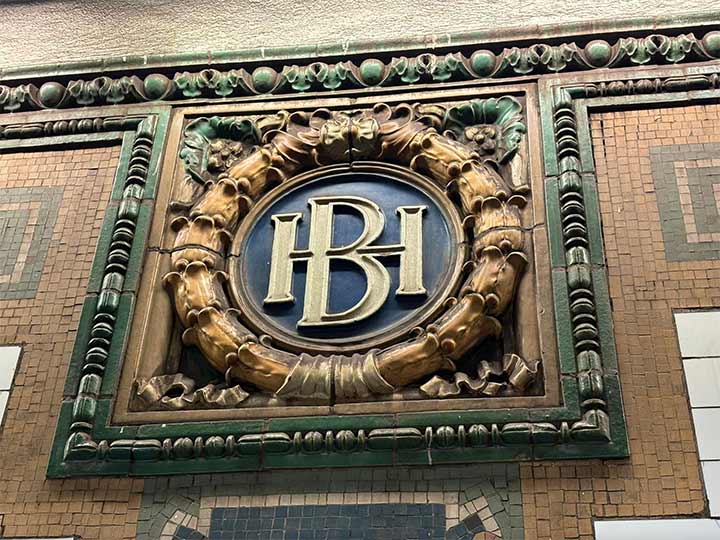
FOR the subway signage buffs, the Borough Hall (Brooklyn) station presents unique opportunities to see various station identification methods over the years. For a number of years in the 1970s and 1980s, I went to college and worked in the Brooklyn Business Library near the station. While the Borough Hall station served the #2 and #3 trains on the 7th Avenue line, the #4 and #5 on the Lexington, and the BMT R train, Broadway-4th Avenue-Astoria (until 1987 when it was flipped with the N) I generally took the R back home to Bay Ridge, but I saw plenty of the elaborate Borough Hall platform serving the 4 and 5. Why? Well, on some of those late nights into the wee hours at O’Keefe’s Tavern on Court Street, the other subway entrances were closed, leaving only the main entrance on Joralemon Street open. To get at the R from there, you went down to the “first” Boro Hall tracks serving the 4 and 5, then down a tunnel connecting you with the Boro Hall station serving the 2 and 3, then up a staircase, down another tunnel and then down an escalator to get to the Court Street station serving the R.
All three Boro Hall/Court Street stations have their own mosaics and/or terra cotta. The BMT station, opened in 1920, is a central platform, but the wall mosaics show the long-vanished Kings County Courthouse. The 7th Avenue Line Boro Hall station, built in 1919, shows Brooklyn’s Borough Hall, built in the 1850s as Brooklyn’s City Hall when it was an “independent” city on its own.
Recently, I was lollygagging around the “original” Boro Hall station waiting for a #4. In typical fashion, I had just missed the train and the weekend schedule meant I had an 11 minute wait, so I wandered about and noticed a pair of identification plaques in two different styles. This Borough Hall platform was built in 1908 and marked the subways’ first Brooklyn foray, having already spread into the Bronx with elevated extensions. It was also among the last, if not the last, to use expensive, elaborate terra cotta in station signage. Both the station ID plaques, plus the escutcheon seen here with the BH digraph, were designed and built built by the Hartford Faience Company. While the station last underwent a renovation in the 1980s, some of the terra cotta plaques have by now become the worse for wear. Fortunately the MTA is currently restoring some of them.

When trainsets got longer, the platforms had to be lengthened and so they were in 1910-1911. However, terra cotta was not used this time as the subways, both BMT and IRT, used mosaics for subway signage exclusively beginning with the Dual Contracts expansion in 1911-1913 all the way to the last new BMT stations built in 1928. The mosaicists at American Encaustic Tiling tried their best to match the Hartford Faience terra cotta as far as design and color, but of course couldn’t match the 3D texture.
Unfortunately this is one of the few still-complete Borough Hall mosaics on the Manhattan-bound side, as most of them are in tough shape indeed. I’m hoping the MTA will turn its attention to the Borough Hall mosaic signs after they’re done with the terra cotta.
As always, “comment…as you see fit.” I earn a small payment when you click on any ad on the site. Take a look at the new JOBS link in the red toolbar at the top of the page on the desktop version, as I also get a small payment when you view a job via that link.
4/2/24

